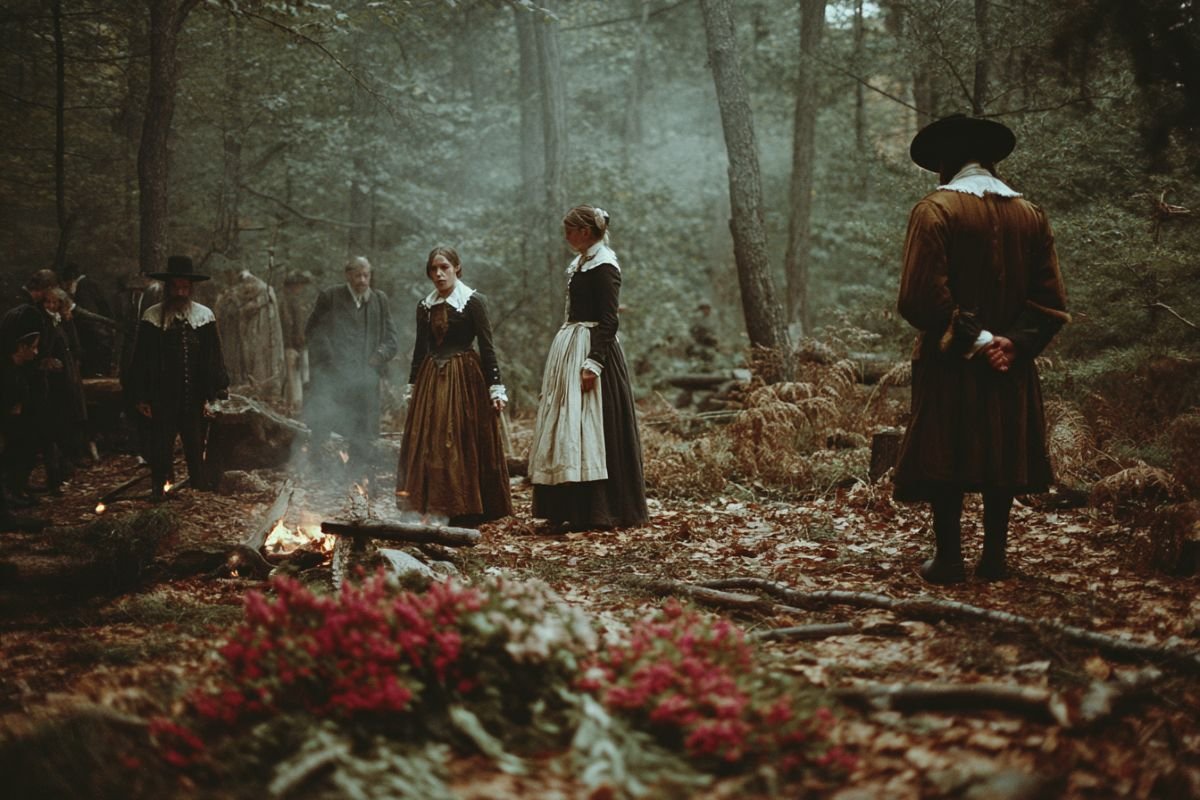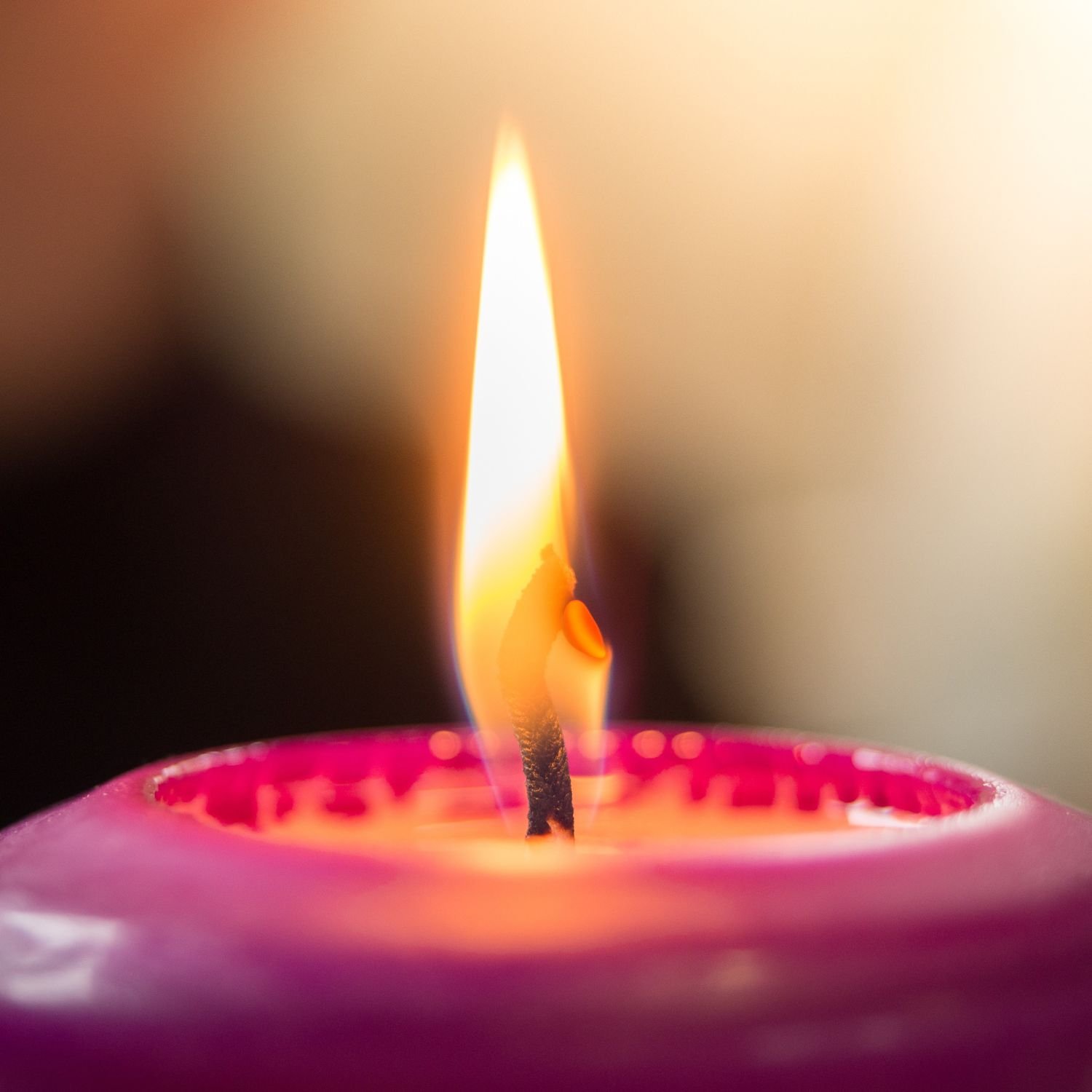What Really Happened in Salem
The Story We Think We Know
The first time I heard about the Salem witch trials, I was a kid. It sounded like a textbook passage describing mass hysteria, with girls pretending and courts hanging people for no good reason. It didn’t land. Not really.
Years later, when I began walking this path—studying witchcraft, reclaiming my power, and honoring the ones who came before—it hit differently. Because the mass hysteria story wasn’t the full truth. Not even close.
A Story of Control
The Salem witch trials weren’t just about superstition. They were about fear, control, patriarchy, and the punishment of anyone who didn’t conform. And once you start looking closely at what happened, once you trace it from the beginning to the bitter end, you start to see something even more disturbing. It didn’t happen in a vacuum, and it wasn’t a fluke. Rather, the corrupt and twisted system did exactly what it was designed to do. That’s why I’m telling this story. Not to sensationalize it. Not to simplify it. But to lay it out, start to finish, through the eyes of someone who carries the word witch with intention.

Before the Panic: Salem in the Late 1600s
To understand what unfolded in 1692, you have to know what came before. Salem wasn’t just a quiet little town that suddenly snapped. It was already fractured.
There were two Salems, for starters. Salem Town was coastal, mercantile, and relatively wealthy. Salem Village, where most of the accusations happened, was more rural, more isolated, and far more devout. The people there were mostly farmers, and they were struggling—economically, politically, and spiritually.
Tensions were everywhere. Land disputes, church power struggles, old rivalries. Some of it had been simmering for years. Add in a new minister, Reverend Samuel Parris, who wasn’t exactly popular, and you get a community teetering on the edge. People didn’t just dislike each other. They distrusted each other. And under Puritan rule, with its strict codes of behavior and rigid gender roles, being “different” could mean being dangerous.
How it Began
Society boxed women in, demanding they stay silent, obedient, god-fearing, and useful. If you didn’t have a husband or land or children—or worse, if you spoke your mind—you became a question mark. And question marks made people nervous.
There were also real-world fears pressing down. War on the frontier. Smallpox outbreaks. Harsh winters. Crops failing. People wanted answers. They wanted something—or someone—to blame.
So when a group of young girls started behaving strangely… the fire was already waiting. All it needed was a spark.
The First Accusations (January–February 1692)
It started in Reverend Parris’s own house. That part always gets me.
His nine-year-old daughter, Betty, and his eleven-year-old niece, Abigail Williams, began acting… strange. Screaming. Throwing things. Hiding under furniture. They complained that invisible forces pinched or bit them. It scared people. And in that community, fear didn’t stay small for long.
A local doctor—William Griggs—looked at the girls and came to a conclusion that shaped everything that followed: he said it wasn’t physical. He said it was witchcraft.
It’s hard to explain how dangerous that diagnosis was in a place like Salem. That one word—witchcraft—carried the weight of eternal damnation. It meant the devil was present. Not metaphorically. Literally. And once people believed that, things moved fast.
The judges asked the girls who afflicted them. They named three women. All of them, in one way or another, outsiders.
The First Three
Tituba, an enslaved woman in the Parris household. Likely of Indigenous Arawak or African descent. They thought of her as “different” even before any accusations.
Sarah Good, a homeless woman who begged for food and shelter. In a town full of strict Puritans, that was enough to make people uneasy.
Sarah Osborne, who had married her servant and hadn’t been to church in years. She was sick, confined to bed, and already judged by the community for her choices.
These were the first three. But not the last.
They were arrested in late February and brought in for questioning. The pressure was intense. Tituba, under likely physical coercion, confessed to being a witch—but not just that. She said there were others. Many others. She claimed they flew through the air. Signed the devil’s book. Tried to destroy the village.
And that… lit the match.
What I keep coming back to is this: the people they accused first were already invisible to their community. Marginalized. Dehumanized. Nobody with power was protecting them. So when fear needed a target, it found the easiest ones to strike.
The Trials (Spring–Summer 1692)
Once Tituba spoke, it was like something broke loose. The accusations spread faster than anyone could contain them. Within weeks, more girls were claiming affliction—screaming in court, writhing on the floor, pointing fingers at people who had barely spoken to them. And the town… believed them.
That part is still hard to sit with. This all happened in broad daylight. In churches. In courtrooms. With neighbors watching.
The legal system twisted to meet the panic. The courts began accepting what they called spectral evidence. Basically, if someone said, “I saw her spirit in a dream, and she hurt me,” that was enough. You didn’t need proof. You just needed a story that matched the fear everyone already felt.
It sounds ridiculous now. But it was deadly then.
I read the names, and it never gets easier. Rebecca Nurse, a respected elder in her 70s. A grandmother. Known for her kindness. Accused. Arrested. Her neighbors signed petitions on her behalf—but it wasn’t enough. She was convicted and executed.
Martha Corey, who had the courage to say publicly that the girls were lying. That alone made her a threat. The minute she questioned the hysteria, the spotlight turned on her.
John Proctor, one of the first men to speak out against the trials. He said the court was a sham. That the girls were faking it. For that, he and his pregnant wife Elizabeth were both accused.
The irony? The more respected you were, the more dangerous you became. Because if you could be a witch, then anyone could. That fear kept the fire burning.
Turning on Each Other
And it wasn’t just girls pointing fingers anymore. Adults started accusing other adults. Friends. Family members. People even turned on their own spouses to avoid suspicion. If it sounds like survival—it was. If it sounds like betrayal—it was that too.
The whole thing became a performance. The afflicted collapsed dramatically in court. Claimed to see spirits flying through windows. Some judges encouraged it. Others just let it happen. No one really stopped it.
As an accused, your choices were impossible. Deny it, and you’d likely hang. Confess—even falsely—and maybe you’d live. But you’d live with the guilt. You’d live knowing someone else might die in your place.
I’ve read hundreds of pages of testimony, and what stays with me most is the silence in the gaps. The people who couldn’t speak up. The ones who knew it was wrong but said nothing.
This was the spring and summer of 1692.
Executions and Escalation (June–September 1692)
The first execution happened on June 10th, 1692. Her name was Bridget Bishop.
She spoke her mind. Owned a tavern. Wore bright clothes. They accused her of witchcraft before, years earlier. She didn’t confess. Didn’t beg. And that was enough. They hanged her for it on what came to be known as Gallows Hill.
It didn’t stop there. Once the blood started flowing, the trials moved faster.
Sarah Good was next. Pregnant when arrested. They questioned her daughter, too—just four years old. Sarah never stood a chance. She died insisting she was innocent. Her final words cursed the judge.
Elizabeth Howe. Susannah Martin. Rebecca Nurse. Sarah Wildes. All executed on July 19.
It’s one thing to read names. It’s another to sit with them. To imagine what it meant to walk up that hill in chains, look at the noose, hear the prayers of people who thought they were doing God’s will.
Then there was Giles Corey.
He didn’t plead guilty or innocent. Just refused to enter a plea at all. Maybe it was stubbornness. Maybe strategy. The law at the time let land pass to heirs if someone gave no plea, but stripped it away after a conviction.
So they tortured him. Slowly. Brutally. They laid him on the ground, stripped him naked, placed a wooden board over his chest, and began piling stones on top.
He never broke.
His last recorded words were “More weight.”
They crushed him to death.
Damage Done
That image—Giles lying in the dirt, refusing to give them what they wanted—it haunts me. It also reminds me that resistance sometimes looks like silence. Like stillness. Like refusal.
By September, the town had executed nineteen people. Dozens more were in jail. Some had confessed, not because they were guilty, but because it was the only way to stay alive. And even then, you weren’t free. It ruined your name. Your family, marked. Your soul, supposedly damned.
The court sanctioned it all. By ministers. By neighbors. It didn’t happen in the shadows. It happened right out in the open.
What chills me most is how ordinary it became. How the trials folded into everyday life. How people went to hangings and then went home to supper.
That’s the real danger. When something so wrong becomes normalized. When cruelty becomes routine.
The gallows didn’t just take lives. They took something out of the town itself. Something sacred. Something it’s still trying to get back.
The Trials Collapse (October 1692–May 1693)
It couldn’t last forever. Eventually, even the people feeding the fire started to feel the heat.
Everything shifted in October of 1692. That’s when Governor William Phips stepped in. And I always think—it took that long?
His wife had just been accused. That’s what it took for someone to hit pause.
He put an end to the Court of Oyer and Terminer—the special court that had been created just for the witch trials. Without it, the machine started losing momentum. New trials were delayed. Some cases were dismissed. And finally, they stopped accepting spectral evidence. That alone should’ve ended it from the beginning.
But it didn’t make things right.
By then, twenty people were dead. Dozens more had spent months in prison. Some had died in jail. Families were torn apart. Property was seized. Children orphaned. Reputations shattered. And still—no real accountability.
It wasn’t some collective moment of clarity that ended the trials. It was politics. Public pressure. The growing unease that maybe… just maybe… they’d gotten it wrong.
People began to whisper. Then speak out. Some ministers tried to distance themselves. Others stayed quiet, which is worse in its own way.
By the spring of 1693, most of the remaining prisoners had been released. Not compensated. Not exonerated. Just let go. Like everything could go back to normal. As if that kind of wound doesn’t stay open for generations.
What stays with me is how slow the apology was. And how incomplete. For years after, the people of Salem barely talked about what happened. Some moved away and tried to forget. Some couldn’t.
There was no public reckoning. No justice. Just silence.
And maybe that’s why it still echoes so loudly.
Aftermath and Legacy

They released the last prisoner in May of 1693. Salem tried to move on. But how do you move on from something like that?
For a long time, people didn’t talk about it. Not in public. Not even with each other. Families who had accused others carried that guilt. Families who had lost someone—well, they carried something heavier. And the town itself… it kept functioning, but something had cracked.
In 1697, five years after the executions began, the Massachusetts General Court declared a day of fasting and prayer. A kind of public repentance. They called it a day of humiliation. That’s the actual word they used. Humiliation. Not justice or healing or apology. Just shame.
It wasn’t enough.
Too Easily Forgotten
In 1706, Ann Putnam Jr., one of the most active accusers during the trials, stood in front of her church and confessed. She said she was wrong. That Satan mislead her. That she had caused the deaths of innocent people. She asked for forgiveness. And they gave it to her.
It wasn’t until 1711—almost twenty years later—that the Massachusetts legislature offered some restitution to the families. Partial, not total. They only officially cleared a few of the names.
It took centuries to fully acknowledge what happened.
In 1957, the state of Massachusetts finally passed a law declaring the trials a tragedy. They exonerated some, but again—not all. Not until 2001 did the final five names get cleared. That’s not a typo. It really took over 300 years.
And in that time, Salem changed. It went from silence to something else.
Tourism. Storytelling. Halloween. History museums and spell shops. For some, that shift felt like healing. For others, it felt like commercialization. But the energy in Salem is real. I’ve felt it. You probably would too.
There’s grief in the ground there. And power in the remembering.
These weren’t fictional witches burned at the stake. They were real people. And they were hanged. Crushed. Starved. Branded. Forgotten—until they weren’t.
And now we carry them. In every ritual. Every spell. Every act of reclamation.
Not to relive the trauma, but to rewrite the ending.
Lessons from Salem: Power, Prejudice, and Persistence
Salem wasn’t about witchcraft. That’s the most important truth.
Nobody was casting hexes. Nobody was flying on broomsticks or summoning spirits. Most of the accused didn’t even call themselves witches. They were healers. Midwives. Women without husbands. Men who spoke up. People who didn’t quite fit.
The trials were about fear. About power. About maintaining control in a world that was changing. And when people feel powerless, they often lash out at the ones who make them uncomfortable. Especially if those people are poor, female, outspoken, spiritual, or other.
That’s why this history still matters. Because this didn’t just happen in 1692. It happens now. Not in courtrooms with gallows, but in headlines, legislation, and quiet acts of erasure. We still see systems punish people for being different. For standing in their truth. For refusing to apologize for who they are.
And yet, something else survived.
Persistence.
We Must Remember
There is something sacred about remembering. Something revolutionary about refusing to forget. Every time you light a candle with intention, every time you honor the ancestors, every time you choose your own voice over someone else’s rules—you’re pushing back against the same fear that killed those twenty innocent people.
The word witch is still heavy in some places. Still misunderstood. Still weaponized. But we reclaim it not just for ourselves, but for them. For the ones who didn’t get the chance.
I say this quote a lot, even though I know it’s used often. I even have a few favorite tokens to always remember.
“We are the granddaughters of the witches you couldn’t burn.”
For The Witches They Couldn’t Burn
And we’re more than that. We’re teachers, protectors, builders of something ancient and alive.
join the NEWSLETTER
Get grimoires, journals, and guides delivered right to your email.
Don’t miss out on the essentials you need.
Salem Is Not Just A Place
Salem isn’t just a place. It’s a mirror. And the reflection it shows us depends on what we’re willing to face—and what we’re ready to heal.
I’ve read the names. Felt the ache.
What happened in Salem wasn’t just a moment of mass hysteria. It was a system that chose who was allowed to speak, to live, to matter. And it did what systems like that always do—it punished the people who refused to shrink.
I don’t tell this story for shock value but because I believe remembering is an act of magick. I believe that honoring the dead, telling the truth, and holding space for complexity is part of the work we do as witches. As empaths, seekers, humans.
You don’t need a cauldron to feel the energy of Salem. You just need a pulse and a little willingness to look. To ask what’s still happening today in your world, your town, your life.
It’s not just about what they did back then. It’s about what we do now.
📬 Want more witchcraft history, beginner-friendly spells, and tools to walk your path with clarity and power?
✨ Subscribe below and I’ll send you thoughtful, magickal emails filled with stories, rituals, and reminders that you’re not alone.












